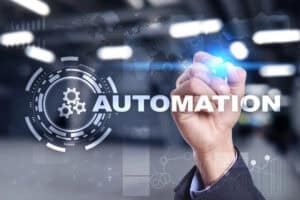Industrial AI Agents Shift From Single Tasks to Autonomous Ecosystems
The next competitive advantage in industrial AI lies in building holistic, context-aware, and autonomous multi-agent systems that drive operational efficiency.

The integration of AI into industrial environments is undergoing a transformative shift—from narrow, task-specific applications to holistic, autonomous ecosystems. While early industrial AI agents functioned like digital assistants for isolated tasks (e.g., anomaly detection or predictive maintenance), organizations now seek multi-agent systems (MAS) capable of collaborative, context-aware decision-making.
The Limits of Single-Task AI
Current industrial AI deployments often operate in silos, lacking awareness of broader operational goals or real-time conditions. For example, a pump failure prediction model might flag an issue but cannot coordinate with inventory or production scheduling systems to mitigate downtime. This reactive approach struggles to scale across complex workflows.
The Rise of Multi-Agent Systems
MAS enable AI agents to interact dynamically, sharing information and aligning actions with overarching objectives. In practice:
- A predictive maintenance agent forecasting conveyor failure could trigger:
- An inventory agent to secure replacement parts
- A production scheduler to adjust shifts
- An energy optimizer to reroute processes for cost/carbon efficiency
Key Enablers: Contextual Awareness & Data Infrastructure
Autonomous decision-making requires:
- Real-time OT/IT data integration (sensors, logs, market/weather feeds)
- Semantic modeling to contextualize raw data (e.g., linking a pressure drop to scheduled maintenance)
- Platforms like Cognite Data Fusion, which unify industrial data and support open standards for future scalability
Real-World Applications
- Autonomous energy optimization: Agents balance plant-wide energy use with production demands, reducing costs and emissions.
- Self-healing production lines: AI detects failures, initiates repairs, and reroutes workflows—minimizing downtime.
The Path Forward
To compete, industries must transition from siloed AI tools to agent-driven ecosystems that:
- Adapt fluidly to changing conditions
- Align actions with strategic goals (sustainability, resilience)
- Leverage platforms like Cognite Data Fusion for scalable data integration
The future belongs to AI that doesn’t just inform but autonomously drives operations.
Related News
Beginner-Friendly AI Agent Projects to Learn and Build
Explore five practical AI agent projects for beginners, covering scheduling, coding, content creation, research, and search functionalities.
Claude Sonnet 4 5 Advances AI Agents Toward OS Like Capabilities
Anthropic's Claude Sonnet 4.5 coding model demonstrates how AI agents could evolve into dynamic operating systems, raising questions about future app development and security.
About the Author

Dr. Emily Wang
AI Product Strategy Expert
Former Google AI Product Manager with 10 years of experience in AI product development and strategy formulation. Led multiple successful AI products from 0 to 1 development process, now provides product strategy consulting for AI startups while writing AI product analysis articles for various tech media outlets.